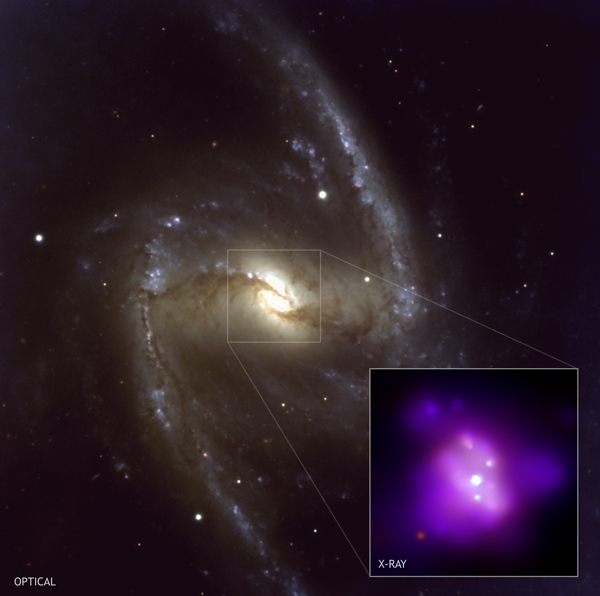
 Credit:X-ray: NASA/CXC/CfA/INAF/Risaliti Optical: ESO/VLT
Credit:X-ray: NASA/CXC/CfA/INAF/Risaliti Optical: ESO/VLT
Eclipse of the Dark Heart
At the heart of most (all?) galaxies lies the true heart of darkness, a black hole. You can't see it (it swallows all radiation), but you can see the effect it has on its neighborhood: swirling streams of incredibly hot matter which emits X-rays before disappearing forever into the event horizon of the black hole. The image above shows a galaxy, NGC 1365, harboring an actively eating black hole in its nucleus. The inset is an X-ray image of the nucleus, taken by the Chandra X-ray observatory. Amazingly, while astronomers were watching, Chandra saw something eclipse the black hole, shutting off its X-ray emission for a brief period of time. Astronomers were able to use this information to help "resolve" the eclipsing body, which is believed to be the disk of material being accreted by the black hole. Amazingly, this disk is only a little larger than the distance between the sun and Jupiter. The black hole's event horizon is considerably smaller.
<
HEA Dictionary ● Archive
● Search HEAPOW
● Other Languages
● HEAPOW on Facebook
● Download all Images
● Education ● HEAD
>
Each week the HEASARC
brings you new, exciting and beautiful images from X-ray and Gamma ray
astronomy. Check back each week and be sure to check out the HEAPOW archive!
Page Author: Dr. Michael F. Corcoran
Last modified Monday, 26-Feb-2024 17:11:02 EST


